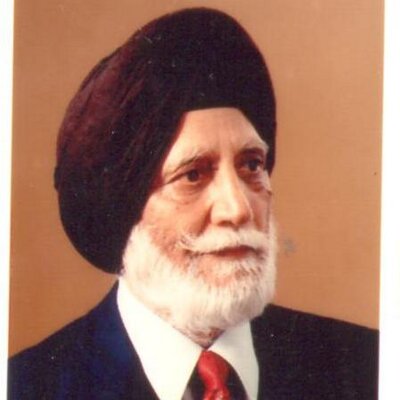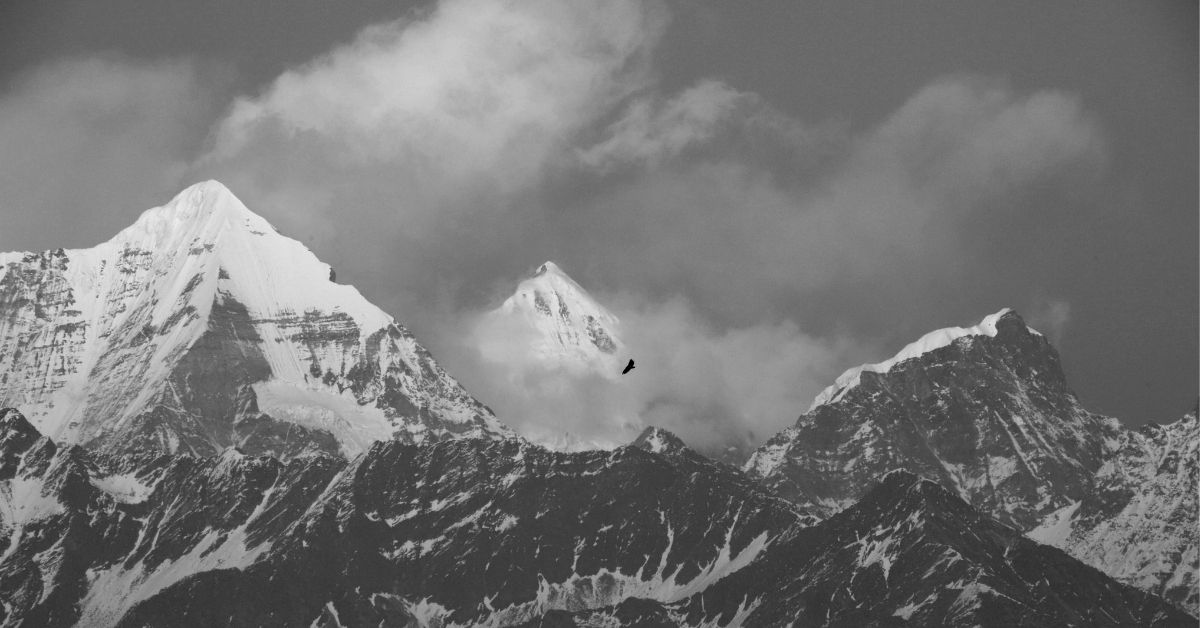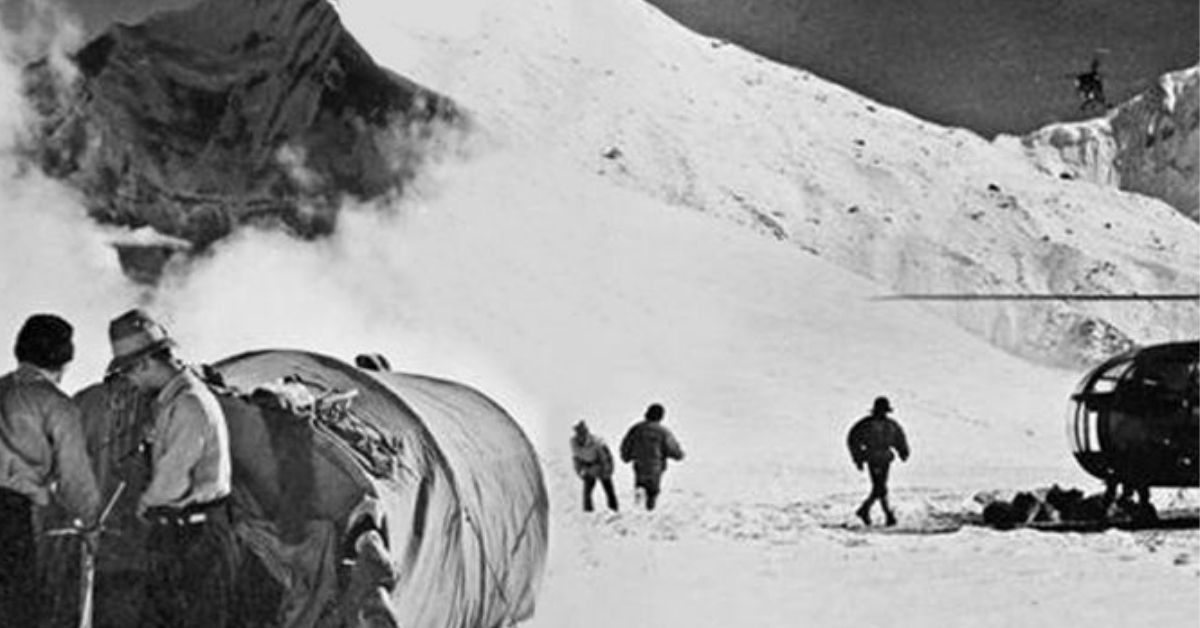Snow-capped mountain peaks where no one ever ventures, a secret government mission, dangerous nuclear devices and a disaster supposedly waiting to happen — the Nanda Devi mystery has all the makings of a Dr Strangelove-esque movie.
The story dates back to the 60s, a little after China had conducted its first nuclear tests near Lake Lop Nur in Xinjiang Province. It came full circle in 2018 when Uttarakhand Tourism Minister Satpal Maharaj urged Prime Minister Narendra Modi to reopen a cold case. Moreover, the incident was thrust further into the spotlight after a glacier burst in Raini, Uttarakhand, in February this year.
So what connects a government mission, over half a century old, with a recent calamity in 2021?
A buried secret
Back then, Cold War hysteria was at its peak, and the entirety of the United States of America was neck-deep in it. The American Central Intelligence Agency reached out to the Indian Intelligence Bureau for help in spying on Chinese nuclear tests and missile firings.
Even the beginning of this story is nothing short of the intro of a war movie. In his book ‘Spies in the Himalayas’, internationally renowned mountaineer Captain Manmohan Singh Kohli wrote that he believes the idea was born in a Washington cocktail party. National Geographic staff photographer Barry Bishop shared a drink with US Air Force Chief of Staff Curtis LeMay, and the discussion was sparked. “On the surface, [the two] seemed to have little in common. But when Bishop spoke of the unique vantage point from atop the Himalayas — with an unfettered view across Chinese-occupied Tibet — LeMay was all ears.”
Around the same time, halfway across the world, Captain Kohli had just wrapped up the first successful scaling of the summit of Mt Everest by an Indian climbing team. Basking in the expedition’s brand new glory, he was approached to lead the Indian team on a “secret mission”.
“Due to a pressing requirement for unique skills, the intelligence agencies of the United States and India could not turn to their normal roster of spies or paramilitary operatives,” Kohli wrote in his book. “Instead, they had to draw on a small fraternity of elite mountaineers to place a delicate monitoring device at the “roof of the world”.”

And so, in October 1965, a group of Indian and American climbers began scaling the Nanda Devi, India’s second-highest peak, to reach its summit and plant nuclear-powered monitoring devices. These included seven plutonium capsules and surveillance equipment, weighing around 57 kg, to be placed near India’s north-eastern border with China.
Of course, this was no easy feat. As Kohli wrote in his book, “For generations, expeditions have attempted to navigate up the Rishi Ganga. This meant overcoming expansive stretches of downward sloping rock slabs, followed by a narrow staircase of stones, naturally cut across a huge wall. The latter is aptly dubbed as ‘Stairway to Heaven’ by the locals. If you are successful in traversing this feature, you can see the heavenly grandeur of the sacred Nanda Devi. One misstep and you plummet thousands of feet into the gorge, reaching heaven via a more direct route.”
In an interview with Mint Lounge, Kohli said that the team was not aware of the exact nature of the mission. “I was told we had to carry something to the summit of a mountain, alongside the Americans. It was, or the fact that it was composed of 80% of the radioactive material that destroyed Hiroshima, were details we didn’t know. Nobody told us how dangerous it was.”
With the dangers of the route in mind, Kohli kept his team’s safety as his goal. “As our team was approaching the summit, there was a powerful blizzard. We had to leave the generator in a small cave and return because the weather conditions were too dangerous to continue,” Kohli, now 89, tells The Better India. “Our team’s safety was my priority at that point.”
A year later, the team returned to the same point to recover the device and perhaps carry the mission they had been entrusted with. “However, we found the generator was missing. In 1968, we brought in two helicopters from Europe, which could fly at 34,000 feet and went across Nanda Devi. But even those were unable to locate the machine. There was no sign of it whatsoever,” he says.

Some theories suggest the device was lost to an avalanche. Kohli says these plutonium capsules have a longevity of about 100 years and could be buried in the snow somewhere.
In some remote areas of the Himalayas, residents have believed the same for generations. In particular, there was a wave of panic after the glacier burst in Raini this February, which claimed 50 lives and destroyed four villages.
The official cause, as told by scientists, was that a piece of the glacier fell into the water and triggered massive floods in the area. According to a report by the BBC, the glacier was on a slope and held up by a massive rock, which had weakened over time due to repeated freezing and melting. A chunk of ice broke and slid down the steep mountain, and when it reached the floor of the valley, the rocks, snow and sediment it had carried alongside fell into a narrow mountain stream, effectively blocking it. Once the water level increased, a surge of water and rubble burst through the dam, causing massive floods.
However, residents of Raini believe the lost device at Nanda Devi had a role to play in the tragedy. “We think the devices could have played a role. How can a glacier simply break off in winter? We think the government should investigate,” a resident of the village told a BBC reporter.
Kohli tells me he believes a part of the generator was dislodged due to the melting of snow, fell and exploded, which led to the floods. “After ‘65, I was posted near Raini village, and during the three years we spent looking for the device, we tested the water in the Rishi Ganga. We were worried that if the generator slid down the slope, it could contaminate the water, so when people came to bathe there, it could pose serious risks for them. The glacier burst made the story a little clearer. For now, it seems the water is diluted and has flown down to the ocean.”
In 2018, Satpal Maharaj, Uttarakhand Tourism Minister, had met with the Prime Minister to express similar apprehensions that the atomic device could be polluting the Ganga.

A slew of conspiracy theories
For almost a decade after the 1965 expedition, the incident remained a secret before the story broke out in 1978, picked up by the Washington Post. “Until the plutonium deteriorates, which may take centuries, the device will remain a radioactive menace that could leak into the Himalayan snow and infiltrate the Indian river system through headwaters of the Ganges,” the journal warned.
Then Indian Prime Minister Morarji Desai was forced to “drop a bombshell” in the Parliament once the story went public, acknowledging how India and America had collaborated at “the top-level” to plant the device at Nanda Devi. Back then, the enigma surrounding this sudden discovery was only fueled by the mysterious deaths of Lal Bahadur Shastri, former prime minister and minister in charge of atomic energy, and Homi Bhabha, Chairman of the Atomic Energy Commission.
At the time of Bhabha’s death, a newspaper had reported that a Pakistani diplomat based in Paris was the first to reach the air crash site in which the nuclear physicist had perished and was responsible for removing classified documents that he was carrying to America. It was speculated that the papers were related to a small nuclear power project in the Himalayas. Before Desai’s admission in the Parliament, this theory had been dismissed as outlandish.
In 2018, reports stated that the Nanda Devi incident was being made into a Hollywood movie. The project is being pursued by American producer Scott Rosenfelt, who also produced movies including Teen Wolf and Home Alone.
Meanwhile, despite the numerous speculations surrounding all aspects of the secret mission, the whereabouts of the device remain unknown. All that’s left is a series of legends, myths, and fears surrounding the unknown and what risk the nuclear device might pose in the future.
Edited by Vinayak Hegde
No comments:
Post a Comment